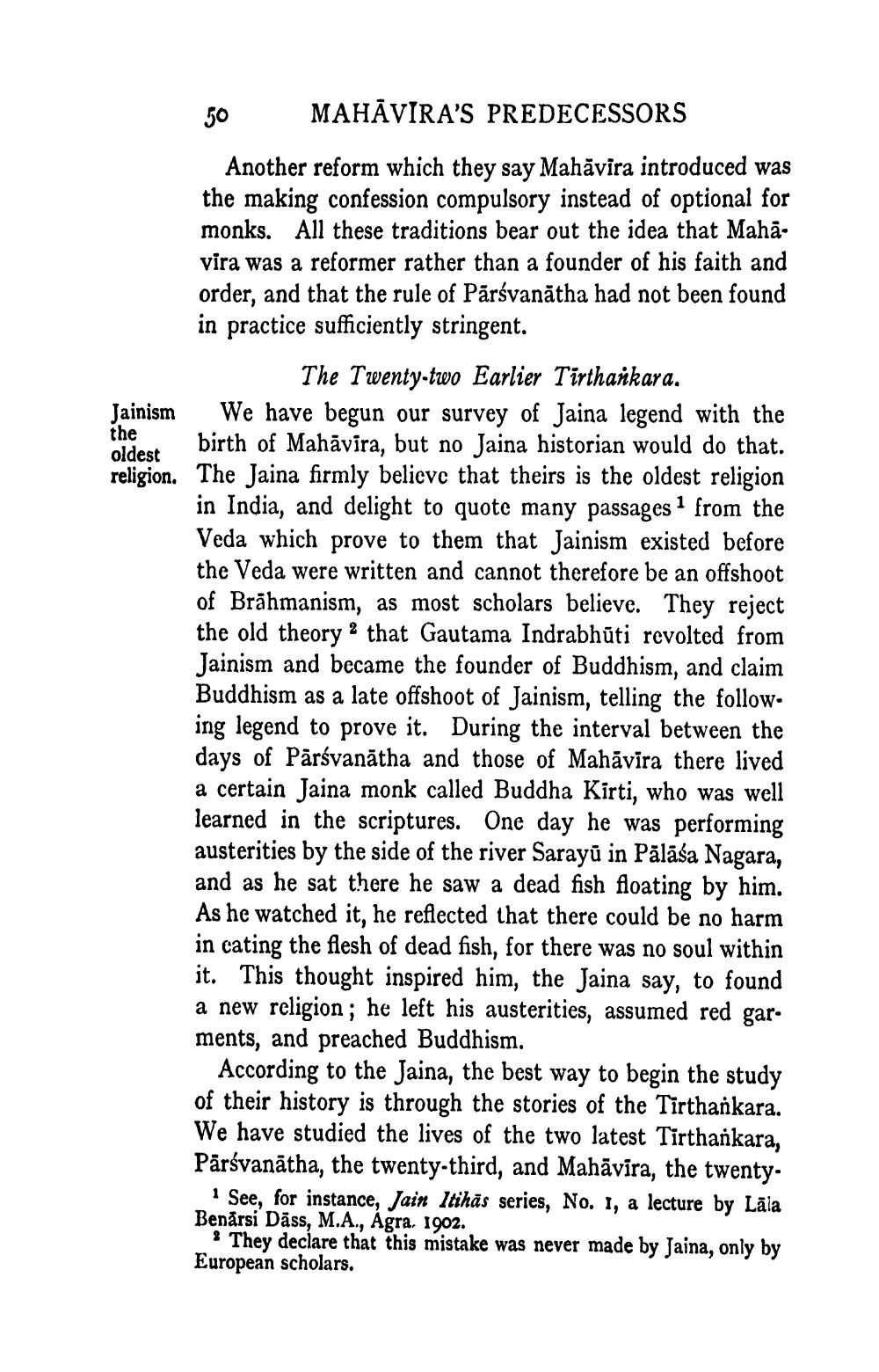________________
the
50 MAHĀVIRA'S PREDECESSORS
Another reform which they say Mahāvira introduced was the making confession compulsory instead of optional for monks. All these traditions bear out the idea that Mahā. vira was a reformer rather than a founder of his faith and order, and that the rule of Pārsvanātha had not been found in practice sufficiently stringent.
The Twenty-two Earlier Tirthankara. Jainism We have begun our survey of Jaina legend with the
birth of Mahāvira, but no Jaina historian would do that. oldest religion. The Jaina firmly believe that theirs is the oldest religion
in India, and delight to quote many passages 1 from the Veda which prove to them that Jainism existed before the Veda were written and cannot therefore be an offshoot of Brāhmanism, as most scholars believe. They reject the old theory that Gautama Indrabhūti revolted from Jainism and became the founder of Buddhism, and claim Buddhism as a late offshoot of Jainism, telling the following legend to prove it. During the interval between the days of Pārsvanātha and those of Mahāvīra there lived a certain Jaina monk called Buddha Kirti, who was well learned in the scriptures. One day he was performing austerities by the side of the river Sarayū in Pälāśa Nagara, and as he sat there he saw a dead fish floating by him. As he watched it, he reflected that there could be no harm in cating the flesh of dead fish, for there was no soul within it. This thought inspired him, the Jaina say, to found a new religion; he left his austerities, assumed red garments, and preached Buddhism.
According to the Jaina, the best way to begin the study of their history is through the stories of the Tirthankara. We have studied the lives of the two latest Tirthankara, Pārsvanātha, the twenty-third, and Mahāvira, the twenty
See, for instance, Jain Itihäs series, No. 1, a lecture by Lāla Benårsi Däss, M.A., Agra, 1902.
? They declare that this mistake was never made by Jaina, only by European scholars.




